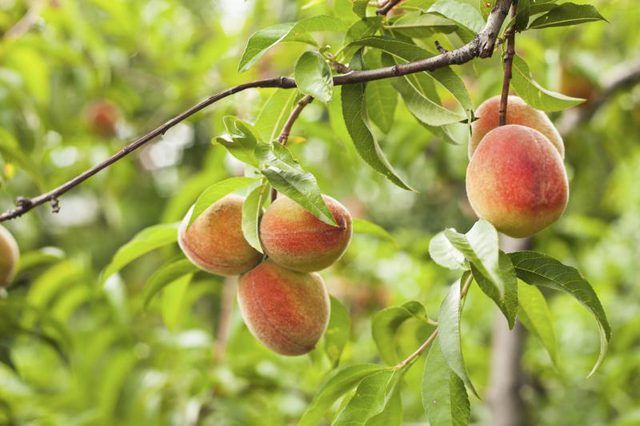Bulbs
Flower Basics
Flower Beds & Specialty Gardens
Flower Garden
Garden Furniture
Garden Gnomes
Garden Seeds
Garden Sheds
Garden Statues
Garden Tools & Supplies
Gardening Basics
Green & Organic
Groundcovers & Vines
Growing Annuals
Growing Basil
Growing Beans
Growing Berries
Growing Blueberries
Growing Cactus
Growing Corn
Growing Cotton
Growing Edibles
Growing Flowers
Growing Garlic
Growing Grapes
Growing Grass
Growing Herbs
Growing Jasmine
Growing Mint
Growing Mushrooms
Orchids
Growing Peanuts
Growing Perennials
Growing Plants
Growing Rosemary
Growing Roses
Growing Strawberries
Growing Sunflowers
Growing Thyme
Growing Tomatoes
Growing Tulips
Growing Vegetables
Herb Basics
Herb Garden
Indoor Growing
Landscaping Basics
Landscaping Patios
Landscaping Plants
Landscaping Shrubs
Landscaping Trees
Landscaping Walks & Pathways
Lawn Basics
Lawn Maintenance
Lawn Mowers
Lawn Ornaments
Lawn Planting
Lawn Tools
Outdoor Growing
Overall Landscape Planning
Pests, Weeds & Problems
Plant Basics
Rock Garden
Rose Garden
Shrubs
Soil
Specialty Gardens
Trees
Vegetable Garden
Yard Maintenance
How to Grow Peach Trees in Florida
How to Grow Peach Trees in Florida. Because peach trees (Prunus persica) need winter cold to produce their fruit, only Floridians in the state's northernmost regions could enjoy dooryard peaches until recent years. Peach varieties were limited to U.S. Department of Agriculture plant hardiness zones 5b through 8.Then new introductions made homegrown...

Because peach trees (Prunus persica) need winter cold to produce their fruit, only Floridians in the state's northernmost regions could enjoy dooryard peaches until recent years. Peach varieties were limited to U.S. Department of Agriculture plant hardiness zones 5b through 8.Then new introductions made homegrown peaches a reality in Central and South Central Florida's USDA zone 9, with some gardeners pushing the envelope further south into USDA zone 10. Growing peaches successfully in Florida starts with varieties closely matched to your garden's winter conditions and growing zone.
Understanding Winter Chill Requirements
Peach varieties rely on a set amount of winter cold -- called chill units -- to spur them out of dormancy and back into growth. In areas with insufficient cold, peaches bloom late and fruit abnormally. With too much cold, they meet their quota early, bloom too soon and forfeit their blossoms and fruit. When purchasing peach trees, look for your USDA hardiness zone and winter chill units. Select trees with a chill requirement slightly lower than your area's average chill. North and North Central Florida provide peach varieties with 450 to 300 chill units. Central and South Central Florida need low-chill peach varieties that tolerate just 225 to 150 chill units per winter.
Selecting the Right Spot
Peach trees adapt well to Florida's various soils, as long as they get good drainage. Hurricane season proves challenging; the trees are very sensitive to standing water. Deep, sandy soil in full, direct sun is ideal. Peaches prefer slightly acidic soil in the 6.0 to 6.5 pH range. Good air flow is important, too. Avoid planting peach trees in low lying areas where cold air accumulates and frost settles. This is particularly important for low-chill varieties grown in more northerly regions. Keep the area under your tree's canopy free from vegetation. Grasses and weeds compete with peach trees and steal nutrients and moisture.
Watering and Fertilizing Peaches
Florida peaches ripen in late April and May when natural rainfall is low. Trees need at least 1 inch of water per week to achieve normal fruit quality and size. Trees in sandy soils may need more. Irrigate as needed to supplement rainfall; never let peaches become visibly stressed. Fertilize your trees with granular 8-8-8 or 10-10-10 citrus fertilizers containing additional elements peaches need, such as iron and zinc. Feed trees in three equal applications: late February, late May and late July. Use a total annual fertilizer amount equal to 1 cup for each year of the tree's age, up to an annual 9-cup maximum. Never fertilize beyond July; you risk stimulating new, freeze-vulnerable growth.
Pruning to Enhance Fruit Quality
High-quality peaches depend on good pruning. At planting, cut trees cut back to a single, 20-inch-tall stem. As lateral branches form, keep three to five main branches and remove the rest. In the first winter, cut back the primary branches by one-third; this forces lateral branches. The next year, do the same with secondary branches that formed. Keep mature trees free from crossing or crowding branches to promote an open-centered, bowl-like shape. Prune annually, right around the new year. Use sharp bypass loppers or a pruning saw, and sterilize the blades with household disinfectant before and after you prune. As your trees set fruit, thin the peaches to one fruit per 6 to 10 inches. The sacrifice pays off in fruit quality and size.